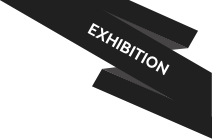Details
Click Book Now to pre-book your gallery ticket
15 April 2022 - 3 July 2022
Claire Barclay: Thrum across our Upper, Tall and Sunken Galleries
Claire Barclay is a visual artist recognised for producing large-scale sculptural installations created in response to specific contexts. Her works are immersive sensory experiences that explore our interactions with materials and functionality, by combining formal elements that evoke thinking around the “psychological relationships between human beings and the objects that we live with and produce.”
In this exhibition Barclay includes a series of tactile sculptural environments, where large-scale forms, made predominantly from fabrics and metals, “suggest textile narratives and explore our complex relationships with cloth.”
Historical connections between the West of Scotland and Northern Ireland have become a focus while evolving the artworks. More specifically, interactions and migrations of people due to work, trade, religion and colonisation, and how these relationships relate to textile production. In particular, Ayrshire ‘whitework’ embroidery, linen cloth production, and indigenous dress have informed some of the formal and material choices within the sculptures.
Domestic, industrial and agricultural references are interwoven into ambiguous sculptural forms that explore the nature of human engagement in ‘making’ practices and our cultural and symbolic relationships with materials.
Taking inspiration from a range of reference points, including historical artefacts, museum collections, craft practices, methods and places of production, and anthropological perspectives, the work plays with upsetting conventional hierarchies and assumptions in relation to value and meaning of materials and forms. Often the works indirectly question present day romanticisation and commodification of craft and heritage and provoke us to question our own relationship to these.
Within the exhibition combs, bowls and mirrors are a recurring motif. Persistent and recognisable forms through centuries and cultures, they provide a degree of universality that can be manipulated. Here they appear as large rusty steel forms and as small sharp edged brass objects, ambiguously suggestive of functions of the factory, workshop or institution.
“The work is always suggestive of the body, or bodies, or parts of the body, or functions or movements of the body, and at the same time can also suggest inanimate functional objects. The component parts trigger our inherent ability to anthropomorphise what we see. “
“The works aim to prompt thinking about boundaries. Using organic substances and unconventional material combinations to explore points of division and breaches of physical boundaries that echo more abstract psychological and cultural delineations.”
The larger works or environments, made using Irish linen and other fabrics, are partly created in-situ and in response to the gallery. They play with framing, obscuring and coaxing audiences within the space. Inhabiting these, a range of smaller elements made from precisely finished machined metal and enamelled steel that act as focal points within the work. Also, objects that hold, drain and filter, and speak about mundane, but often poignant, interactions with substances, natural, synthetic or bodily, that soil or stain.
The inclusion of earth pigment, dye and soap evokes a raw tactile quality and breaches precisely created boundaries. The sculptures are poised, unfixed or threatening, and in places substances seep out. This transient and precarious state provides potential for physical and emotional responses.
A desire to work with specific hand making processes has emerged from research for the exhibition. Enamelling, dyeing, quilting and embroidery have been used in the sculptures. These sit alongside other elements made using industrial processes like metal machining. Attention is given to the ways in which these different elements interact, touch and affect each other to create a sense of tension and drama within the sculptures.
Series of print works are situated alongside sculptural works and share common motifs and shapes. “The prints are influenced by a sculptural mindset, so that layered shapes seemingly float within the boundaries of the paper, and attention is drawn to the processes of their making and their material properties. The individual prints are intentionally paired down and instead grouped together to perhaps complete each other. “
Simple geometric shapes made using cut paper, become bodily when printed and overprinted using very transparent flesh coloured ink. New shapes and depth are composed through an improvised process of overlapping. Other motifs are incorporated using ink blends and are ambiguously organic. “It is as if just the skin of the body is present, empty of flesh and bone.”
Claire Barclay is represented by Stephen Friedman Gallery, London
Booking your gallery visit
Click the green Book Now button and select the date and time you wish to visit this exhibition.
Our gallery programming is proudly supported by Gilbert-Ash













